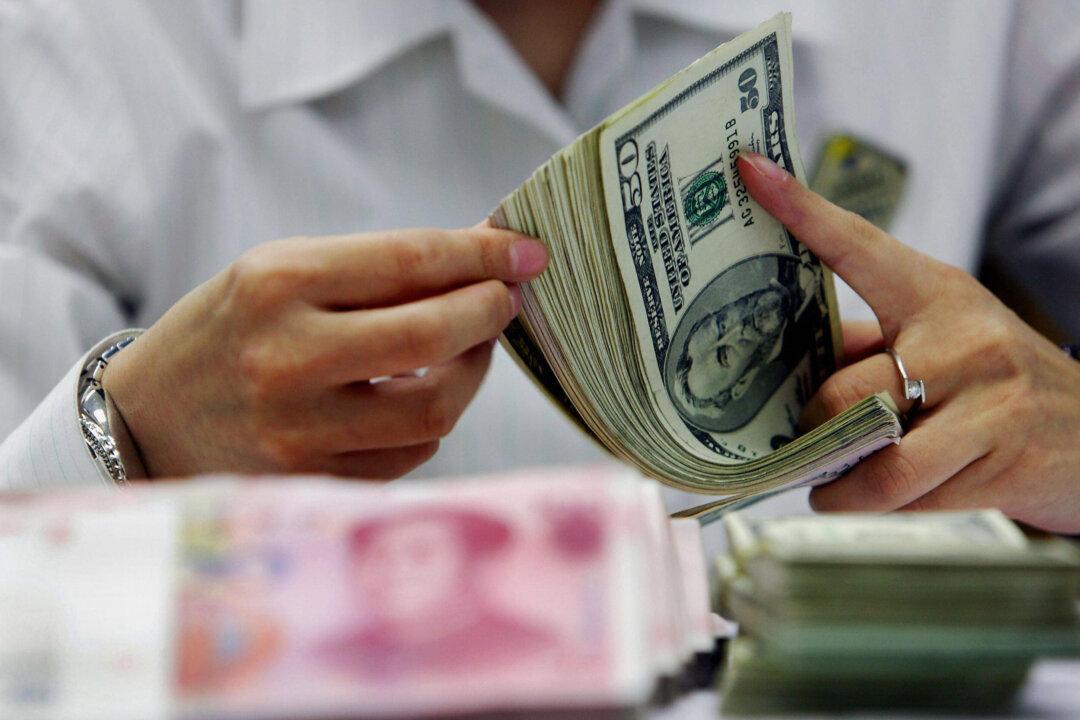The yuan fell to a seven-month low against the U.S. dollar late last month, as analysts say several factors continue to put downward pressure on China’s currency.
On June 21, the offshore yuan to U.S. dollar exchange rate fell to 7.27:1, a seven-month low. The slide was in part due to a weaker-than-expected spot fixing rate set by the People’s Bank of China (PBOC), fueling speculation the authorities may allow the yuan to depreciate further. So far this year, the yuan has fallen more than 2 percent against the dollar.
Foreign investment flows into China’s mainland stock market have also shifted, with organizations moving from buying to selling. About 33 billion yuan ($4.54 billion) flowed out of the mainland through the Shanghai-Hong Kong Stock Connect in June. Year-to-date, capital outflows from the mainland to Hong Kong have reached 129 billion yuan ($17.8 billion).
Hong Kong’s yuan deposits stood at 1.09 trillion ($50 billion) in April, approaching a peak last reached in January 2022. The increase in Hong Kong’s deposit reserves is expected to add to the depreciation pressure on the yuan.
Economic Data Worsens the Forecast
Data from China’s National Bureau of Statistics (NBS) indicated that property investment declined by 10.1 percent in the first five months of 2024 compared to the previous year. Additionally, new home prices have been falling consistently, marking the longest period of decline in nearly a decade.China’s once-booming food and beverage industry is also showing signs of failure. According to the NBS, 460,000 food and beverage enterprises closed their businesses in the first three months of 2024, an increase of about 230 percent over the same period last year, with 180,000 food and beverage outlets closing in March alone.
Recently, China’s Ministry of Finance released data on the fiscal revenue and expenditure situation, saying that from January to May, total national tax revenue decreased by 5.1 percent year-on-year, to eight trillion yuan (about $1.1 trillion), while non-tax revenue increased by 10.3 percent year on year.
While tax revenue fell, non-tax revenue rose. Some of that rise can be attributed to local governments using fines such as weight limit penalties for truck drivers or traffic tickets to boost revenue. The practice has been increasing over the past few years as the pandemic and property market woes eroded government revenue.






